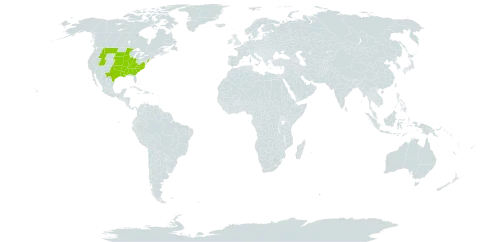Lvs 7–40 cm × 0.3–1.2 mm, erect, not or scarcely twisted, with abundant stomates and usually 4 peripheral strands, usually blackish at base, and with a pale line down the middle of the adaxial side; sporangia (5–)8–15(–20) mm, finely brown-dotted at maturity; one-fifth to two-thirds covered by the velum; megaspores 0.25–0.45 mm wide, with tubercles or short low ridges; 2n=22. Amphibious, mostly in shallow temporary ponds, or nearly terrestrial; Minn. and S.D. to e. Tex. and Ala., e. occasionally to Ill., Tenn., nw. Ga., and reputedly s. N.J.
